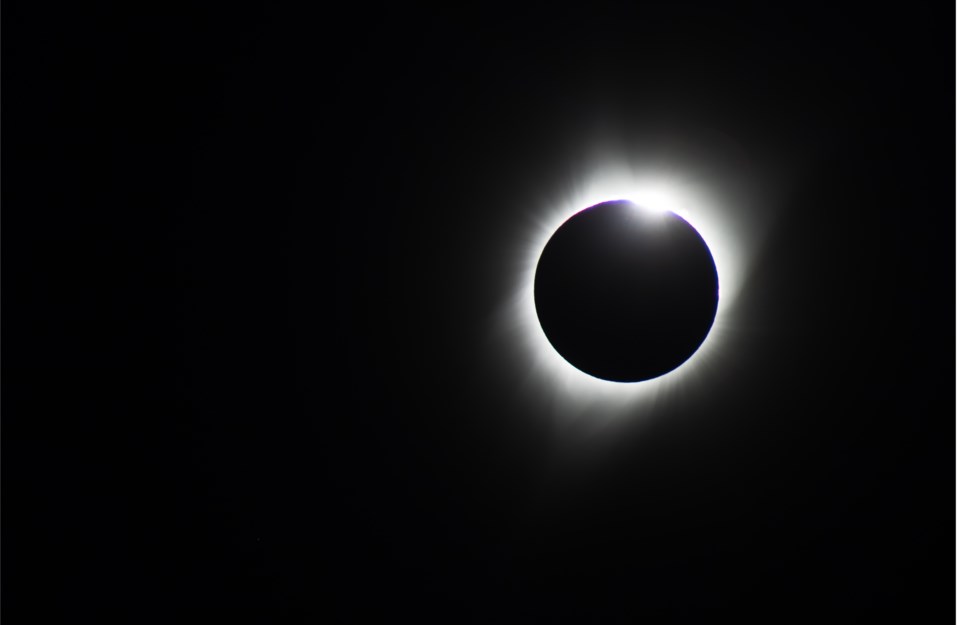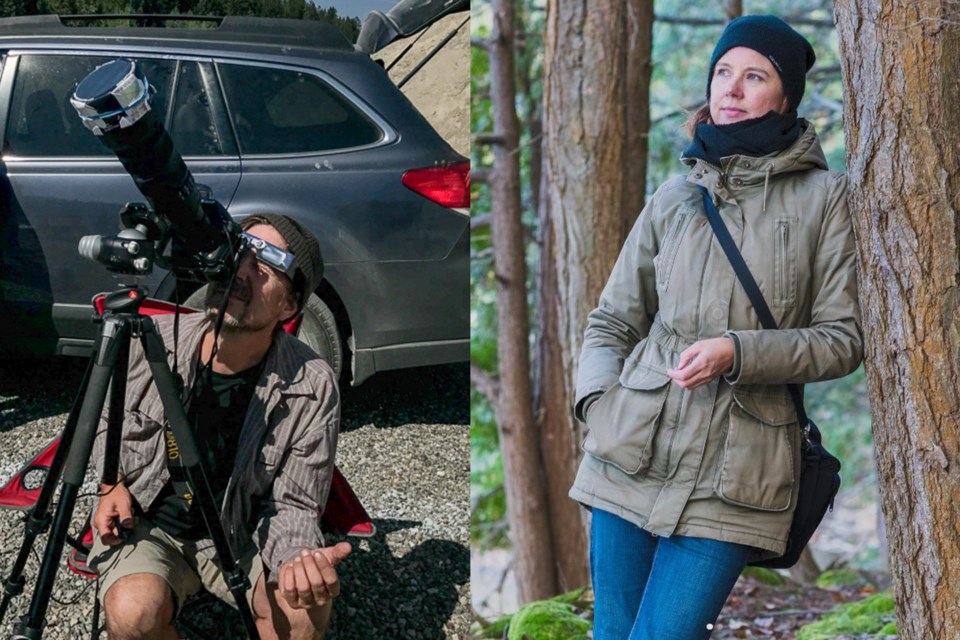Monday’s solar eclipse is fast approaching and the millions of people in the path of totality are gearing up to capture it.
Georgetown area residents Greg Coman and Jody van der Kwaak are among that group, but they have an advantage over most - they are professional photographers.
The pair plans to make their way to the Hamilton area to capture the event, bringing their decades of photography experience with them. They have many words of advice for local residents who will be doing the same.
Safety first!
Our parents emphasized the importance of not looking directly at the sun when growing up. The advice may seem obvious, but many still forget it whenever an eclipse is in town. Paradoxically, amateur astronomers are more likely to damage their eyes during an eclipse.
“We tend to look at it for longer periods of time when there is an eclipse,” Coman said. “It’s the same sun we have been looking at all of our lives.”
The Halton Hills Public Library will be handing out solar glasses on Saturday (April 6). Failing that, Amazon and some brick-and-mortar shops have them for purchase also. Canadian Tire Georgetown carries them (call ahead as supplies go fast).
But bodily safety is not the only thing star-gazers should be aware of. The sun’s intense light can burn out camera sensors, whether in a DSLR or a smartphone. Much like a person’s eyes, they need to be protected.
Coman suggested getting an extra pair of solar glasses and “tape one of the eye lenses in front of your iPhone” or any other smartphone.
For those with dedicated cameras, van der Kwaak suggested getting relatively cheap filters to mount on the lens.
“They are just cardboard boxes that you can use for the eclipse,” she said. Here is one example.
Plan, plan, plan!

One wrong move, and you will have to wait years to see another eclipse. Many websites can prove useful in planning the big day. The US-based National Solar Observatory has an interactive map showing the path of the eclipse.
It's expected to begin just after 2 p.m. on April 8. Full totality - where the moon completely covers the sun - will be at 3:20 p.m. Coman and van der Kwaak advise finding a spot to photograph well before the event starts.
“I would say 1 p.m. would be a good time to be at the location,” Coman said. “Find parking, set up your equipment.”
Both have been practising their equipment set up and camera settings as the big day approaches. As the highly coveted totality lasts only a few minutes, the margin of error is slim.
“Practise beforehand if you really want stunning photos in there that are technically correct,” van der Kwaak said.
One to two hours over the weekend before will be enough. Several YouTube channels offer advice on the perfect settings for photographing the event.
It should be noted that the path of totality will not be over Halton Hills. Hamilton and Burlington are the closest places. But the view will still be stellar in Halton Hills. TimeAndDate.com has a simulation of how it will look in the municipality.
No need to break the bank with equipment
Amateur photographers may already have all the equipment they need to take photos of the eclipse. At a minimum, find a way to keep the phone or camera stable.
“The key thing is to have a steady camera. Even with an iPhone or a (different) mobile phone, I would suggest using a monopod at least. A tripod is preferable,” Coman said. “You can get a mount for your iPhone to adapt it to your tripod.”
Items like wired or wireless camera triggers, neutral density filters and telephoto lenses are not essential, but they help. Coman says he will be using a telephoto lens, specifically with a zoom range of between 70 and 200 mm. There is no silver bullet solution for capturing the eclipse. Preferences may vary from person to person.
Enjoy and capture the moment in time, not just the eclipse
The eclipse truly helps human beings realize their place in the universe. It's meant to be remembered as much as captured.
Totality is the main event, where true pros try to capture things like Bailey beads and the diamond ring effect. But too many people get fixated on the destination and miss the journey.
van der Kwaak reminds photographers that there are other parts of the eclipse to enjoy.
“Be present in the moment and witness this once-in-a-lifetime event,” she said.
“Enjoy this event with others and witness it with your own eyes and have this imprint as a memory.”
“Make sure to also capture the environment and the people around you,” Coman added.
“For some people, it's going to be emotional,” van der Kwaak said. “There's going to be a certain energy and it's also great to capture that if you can.”
More of Coman's and van der Kwaak's works can be found through their Instagram handles:



